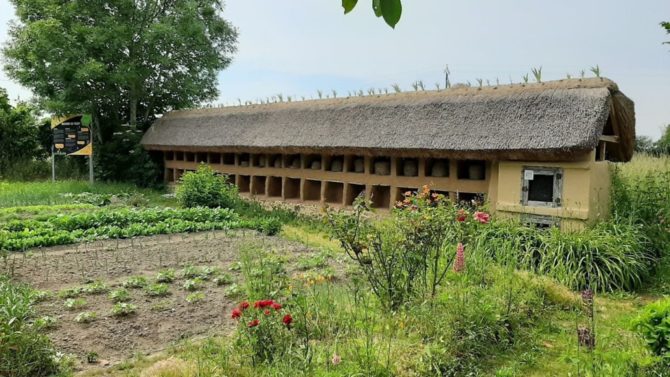How France’s amazing murs à abeilles are helping the country’s bees

Not literally a wall of bees, but a wall of beehives – discover this ancient practice for modern times

Halfway between Saint-Lô and Villedieu-les-Poêles in the Manche region of Normandy lies the small village of Tessy-Bocage. The landscape here has not always been so tranquil. Its mixture of fields, hedgerows and small copses provided much-needed cover for the Allied troops after the D-day landings, and Saint-Lô was one of the towns which was almost completely destroyed by bombing raids. Thankfully, nowadays the bocage has returned to its former serenity with environmentalists actively campaigning to preserve its biodiversity.
And it is here in Tessy-Bocage that a remarkable project has been undertaken – the restoration of un mur à abeilles. Not literally a wall of bees, but a wall of beehives. These walls date back to another historical period, to medieval times, when honey was the main source of sugar. But in the XVIIth and XVIIIth centuries, many of them fell into disuse due to the influx of sugar cane from the American colonies. However, when Napoleon banned all English imports during the Napoleonic wars, people returned to their former ways of getting sugar.
What is the history of the murs à abeilles?

The wall in Tessy-Bocage dates back to the embargo times when a certain Jean-Baptiste Gendrin built the mur à abeilles in 1810. The hives supplied the whole village with honey and were still in use until the 1950s, at which point his descendants decided to retire from bee-keeping. By this time, sugar beet had become a cheaper source of sugar.
As with other constructions local materials were used, so it is not a surprise to see that the wall in Tessy is made of torchis (wattle and daub) and is covered by a thatched roof. There is an overhang so the rainwater does not damage the hives – as M. Fréderic Karle, the thatcher involved in the restoration, remarked dryly ‘Comme vous savez, il pleut des fois en Normandie’ (As you know, it sometimes rains in Normandy).
The wall in Tessy is the largest in France, housing 100 hives when it was first created. Today there are 34 hives visible, with some of the original ones intact. M. Karle is busy making others in the same traditional ‘beehive’-shaped style.
Where else in France are these walls of beehives?
The second largest wall is in Cornillon in Provence. In the south, the walls are made of stone instead of wattle and daub, as befits the terrain and the climate. Most of the walls are constructed in one long line but some have double or even triple tiers. The number of niches per wall varies: some smaller farms had just a few, larger ones which supplied nearby châteaux and abbeys (with wax for candles as well as honey) had more.
The mayor, Michel Richard, was the main driver of the project and he has recruited the help of a local beekeeper, Maxime Legrand, who has already managed to encourage a colony of bees to settle in their new home. “We are not going to save the world with our mur à abeilles but we are restoring part of our cultural and rural heritage”, said M. Richard. I would also add that Tessy-Bocage, in its own small way, is helping to raise awareness of man’s interdependence with nature – in the words of conservationist, John Muir, ‘when one tugs at a single thing in nature we find it is attached to the rest of the world’.
________________________________________________________________________
You might also like…
Share to: Facebook Twitter LinkedIn Email


